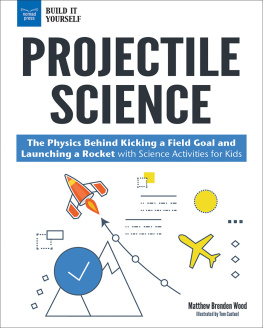Matthew Brenden Wood - The Universe: The Big Bang, Black Holes, and Blue Whales
Here you can read online Matthew Brenden Wood - The Universe: The Big Bang, Black Holes, and Blue Whales full text of the book (entire story) in english for free. Download pdf and epub, get meaning, cover and reviews about this ebook. year: 2021, publisher: Nomad Press, genre: Religion. Description of the work, (preface) as well as reviews are available. Best literature library LitArk.com created for fans of good reading and offers a wide selection of genres:
Romance novel
Science fiction
Adventure
Detective
Science
History
Home and family
Prose
Art
Politics
Computer
Non-fiction
Religion
Business
Children
Humor
Choose a favorite category and find really read worthwhile books. Enjoy immersion in the world of imagination, feel the emotions of the characters or learn something new for yourself, make an fascinating discovery.
- Book:The Universe: The Big Bang, Black Holes, and Blue Whales
- Author:
- Publisher:Nomad Press
- Genre:
- Year:2021
- Rating:5 / 5
- Favourites:Add to favourites
- Your mark:
The Universe: The Big Bang, Black Holes, and Blue Whales: summary, description and annotation
We offer to read an annotation, description, summary or preface (depends on what the author of the book "The Universe: The Big Bang, Black Holes, and Blue Whales" wrote himself). If you haven't found the necessary information about the book — write in the comments, we will try to find it.
A deep dive into the origins of the universe! Explore the ways people have tried answering the fundamental question of how the universe began with STEM activities and research projects that bring out-of-this-world learning into your own hands!
What exactly is the universe? Is it brilliant stars, distant galaxies, and giant black holes? What about the sun, the moon, or the planet Earth? The universe is all these thingsand more! But where did it come from? How did we get here? And where is it all going?
Explore these questions and more in The Universe: The Big Bang, Black Holes, and Blue Whales. In this book, readers ages 12 to 15 embark on an exciting journey that starts with the Big Bang and takes them all the way to the end of the universe, with many thrilling stops in between. Take a look billions of years into the past and discover the mind-bending early moments of the universe, the rise of the first stars, and the formation of the earliest galaxies. Explore the birth our sun and solar system and the formation of the only place in the universe known to support life: the earth. Finally, well zoom billions of years into the future to learn about the death of the sun, a colossal collision of galaxies, and even the fate of the universe itself.
- Links to online resources provide a digital learning experience that integrates content with an interactive platform.
- Investigations include using a diffraction grating or prism to examine the properties of light and how they relate to the sun, modeling different galaxy types and black holes, and exploring the effects of climate change locally.
- Essential questions guide readers investigations while hands-on activities promote critical and creative problem solving, and text-to-world connections highlight the way the past provides context for the present-day world.
About the Inquire & Investigate series and Nomad Press
Nomad Press books in the Inquire & Investigate series integrate content with participation, encouraging readers to engage in student-directed learning. Combining content with inquiry-based projects stimulates learning and makes it active and alive. Nomads unique approach simultaneously grounds kids in factual knowledge while allowing them the space to be curious, creative, and critical thinkers.All books are leveled for Guided Reading level and Lexile and align with Common Core State Standards and Next Generation Science Standards.
All titles are available in paperback, hardcover, and ebook formats.
Matthew Brenden Wood: author's other books
Who wrote The Universe: The Big Bang, Black Holes, and Blue Whales? Find out the surname, the name of the author of the book and a list of all author's works by series.



















 Interested in primary sources?
Interested in primary sources? universe origins
universe origins